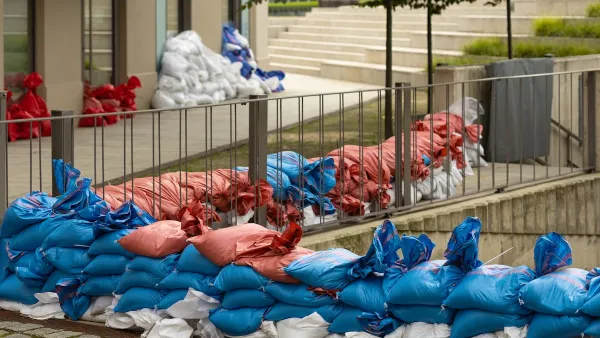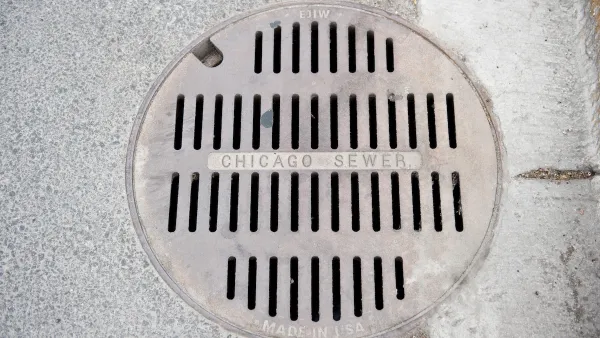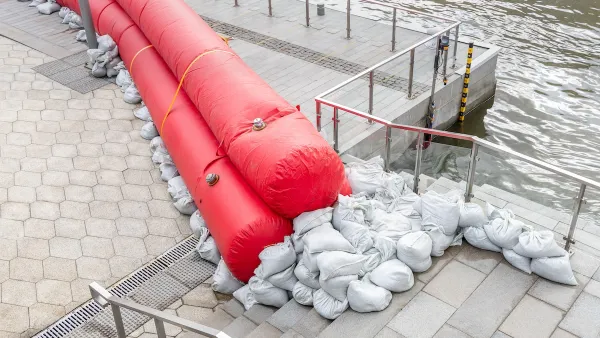How important are the names we use? As Shakespeare said, "What's in a name? That which we call a rose by any other name would smell as sweet." I’ve been struck by this thought recently as I’ve been considering the myriad of organizations and stakeholders trying to have their particular term for stormwater management techniques be more widely adopted in the nomenclature.
How important are the names we use? As Shakespeare said, "What's in a name? That which we call a rose by any other name would smell as sweet." I've been struck by this thought recently as I've been considering the myriad of organizations and stakeholders trying to have their particular term for stormwater management techniques be more widely adopted in the nomenclature.
For example, in one corner there is the low impact development contingent. They want developers to installing a range of natural stormwater approaches that allows the land to act as a sponge and soak up runoff. New Urbanists recently launched "Light Imprint New Urbanism," a new term for "a development technique which aims to lie lightly on the land." I've even entered the fray with the term "site-specific strategies" for those stormwater design solutions that can be incorporated into compact urban areas.
Aren't we all trying to say the same thing to developers, architects, town planners, local governments and everyone else who may be interested? "Hey, look, people! You can have good urban form and manage stormwater on-site!"
It seems to me that the issue is not what these approaches are called, but rather: are they allowed? From what I've seen, the approaches that can manage stormwater runoff on-site, such as strategies that infiltrate, evaportranspirate, or retain runoff for later reuse, are simply not allowed in many communities. They are not allowed because stormwater regulations have not yet recognized, agreed on, or measured the effectiveness of these strategies.
It's an easier proposition to say that a detention basin of a certain size will effectively manage runoff from X number of acres. Data on detention and retention ponds most readily fit into runoff models and permit processes, thereby becoming the path of least resistance. Further cementing these practices are manuals that describe these ponds as "best management practices" for stormwater management. Many of these structural stormwater practices can be bad for urban form – and placemaking in general-- because they require significant land and often don't work for small sites, such as infill or downtown revitalization projects.
Finally, some of these on-site stormwater water approaches, such as rain gardens or grass swales, can trigger other regulations, such as underground injection control requirements, which were originally intended as waste disposal mechanisms-think gas stations or oil wells. If I were a developer, think of the hurdles I would need to clear to install a rain garden-and have it count against my stormwater requirements.
I'm now asking myself if we aren't all wasting time and diluting the importance of our collective message by arguing over what to call these approaches. I think Shakespeare got it right-worry less about what we call things and more about what they are. Don't you think it's time we stop discussing what we call these approaches and start fixing our federal, state, and local water regulations so these approaches can start showing up in new developments?

Analysis: Cybertruck Fatality Rate Far Exceeds That of Ford Pinto
The Tesla Cybertruck was recalled seven times last year.

National Parks Layoffs Will Cause Communities to Lose Billions
Thousands of essential park workers were laid off this week, just before the busy spring break season.

Retro-silient?: America’s First “Eco-burb,” The Woodlands Turns 50
A master-planned community north of Houston offers lessons on green infrastructure and resilient design, but falls short of its founder’s lofty affordability and walkability goals.

Test News Post 1
This is a summary

Analysis: Cybertruck Fatality Rate Far Exceeds That of Ford Pinto
The Tesla Cybertruck was recalled seven times last year.

Test News Headline 46
Test for the image on the front page.
Urban Design for Planners 1: Software Tools
This six-course series explores essential urban design concepts using open source software and equips planners with the tools they need to participate fully in the urban design process.
Planning for Universal Design
Learn the tools for implementing Universal Design in planning regulations.
EMC Planning Group, Inc.
Planetizen
Planetizen
Mpact (formerly Rail~Volution)
Great Falls Development Authority, Inc.
HUDs Office of Policy Development and Research
NYU Wagner Graduate School of Public Service




























